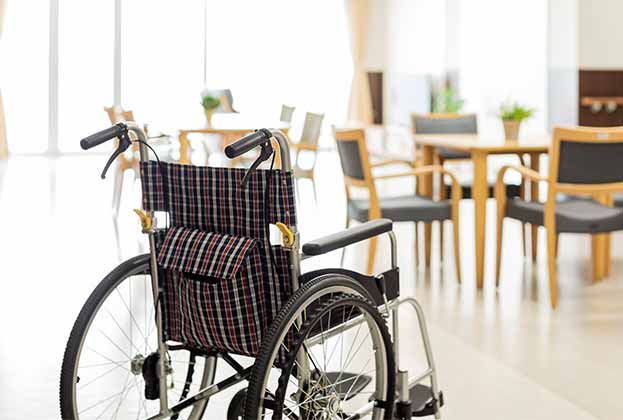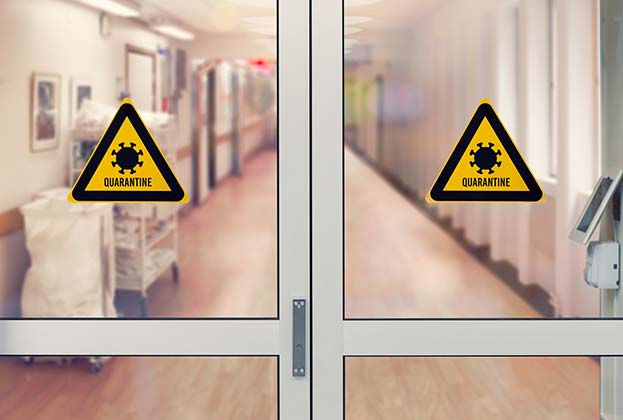With many public bodies and institutions looking at the sector and questioning the care home model, we expect new concepts will continue to emerge from the crisis in the medium term
Colocation model
Last year, Korian, a European leader in the care home sector, acquired 70% of Ages & Vie, a private institution specialised in small care home facilities for dependent elderly people. Due to the small scale of facilities, the concept seems similar to colocation. The residence is a 2-storey house which cannot host more than eight residents. It is often located in rural areas closed to where residents used to live. Residents have their own studios with a bathroom and a small terrace based on the ground floor of the house, whilst the care personnel and their families live on the first floor. As in a typical house, the ground- floor includes a kitchen open to a living room and a dining room, as well as a garden. Korian is planning to develop the concept by building 200 of such residences in France in the next six years from 30 existing today and to expand the model in Germany, Belgium and Italy. Whilst this is a relatively new model in western European, this concept has developed successfully in the UK through brands such as Inspired Living and Guild.

How modern Monaco was built by land reclamation The Principality has been growing since the 19th century
Care home versus home care
OECD figures on long-term care (LTC) recipients amongst the elderly population (65+), shows a growing pattern towards home care. On average across the 10 countries covered in this report, the share of the population aged 65 or over receiving LTC at home increased from 65% to 72% over the past 10-15 years. Home care offers the possibility to receive a wide range of care services for elderly people, whilst staying in their home.
There are several reasons for the rise in home care. The first one is sociological; a home is a place of emotional and physical associations, memories and comfort, hence leaving home can be disruptive and depressing for some people. The second one is financial; home-based solutions offer great prospect in terms of reduction in public expenditure. In some European countries, it is increasingly integrated within the health-care system and largely encouraged. The third reason is technological advancements, which is enabling improvements in home modifications as well as monitoring and instant communication with health careers.
Due to these compelling arguments convincing end-users and governments, some care home operators are increasingly looking into this new elderly care solution by offering both care home and home care services. Largely adopted and encouraged, we expect the share of the elderly population receiving LTC at home will continue to increase for many years. However, we believe it will not cannibalise demand for care home residences. Different health conditions require different care solutions and many homes are and will remain unfit for care in situs.
Merging elderly care offering
As traditional care home operators are embracing new elderly consumer trends and needs by servicing them in their own homes, the step towards tapping in the senior housing market is tempting and slowly closing. The three major European care operators have recently expanded their panel of offers, increasingly including senior housing residences. As opposed to care home, senior housing does not provide assistance with 24/7 skilled nursing. Independent residents live in their apartment benefiting from non-care services and facilities adapted to their age.
In some European countries such as Germany, Belgium, Finland or Portugal, for instance, the two types of residences are often associated and combined within the same complex. This allows to accompany seniors throughout their later life by providing both non-care and care-intensive residential solutions as their needs change over time, whilst avoiding moving and changing neighbourhoods. At the other end of the spectrum, in France, the success of senior housing deeply relied on the distinction between the types of residences, with the senior housing concept promoting the image of free independent elderly people.
Whilst cultural differences will remain across countries, we expect, overall, the two models will increasingly be mixed, driven by expansion and M&A strategies between care home and senior housing operators. In June, Korian bought Les Essentielles in France, a portfolio of 11 senior housing residences (independent living), whilst a few years ago, Orpea and DomusVi have started developing new senior housing brands (France Senior and Templitudes respectively).
Read the articles within Spotlight: European Care Homes below.
.jpg)


